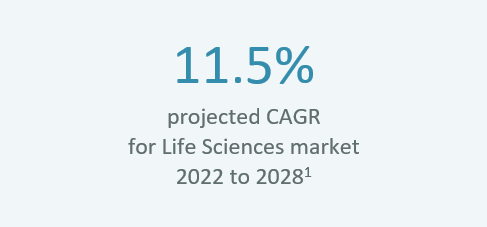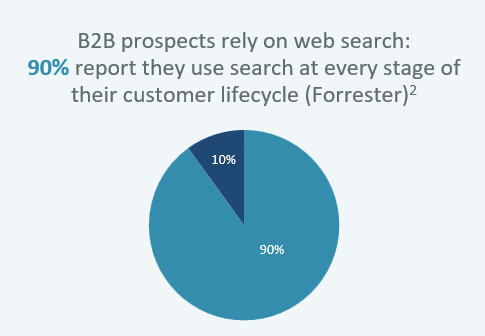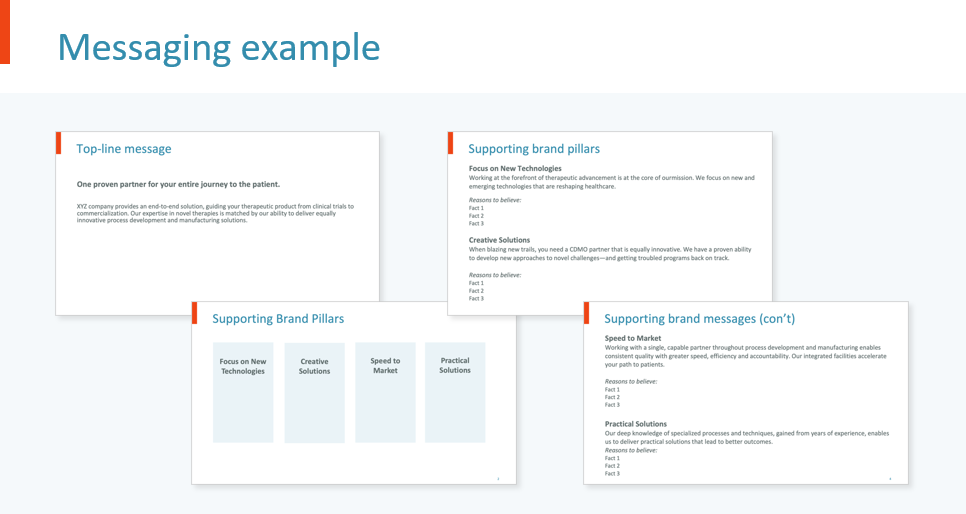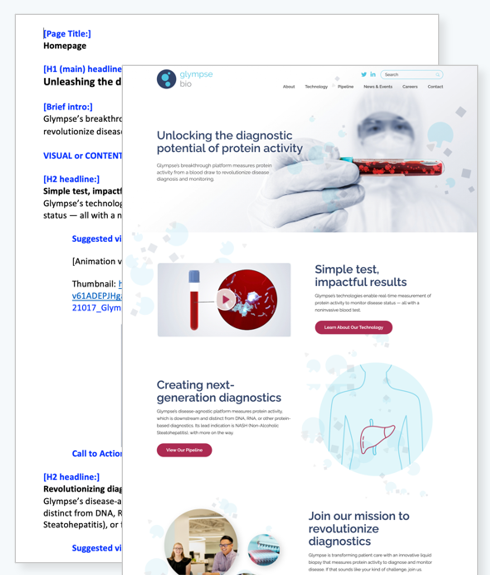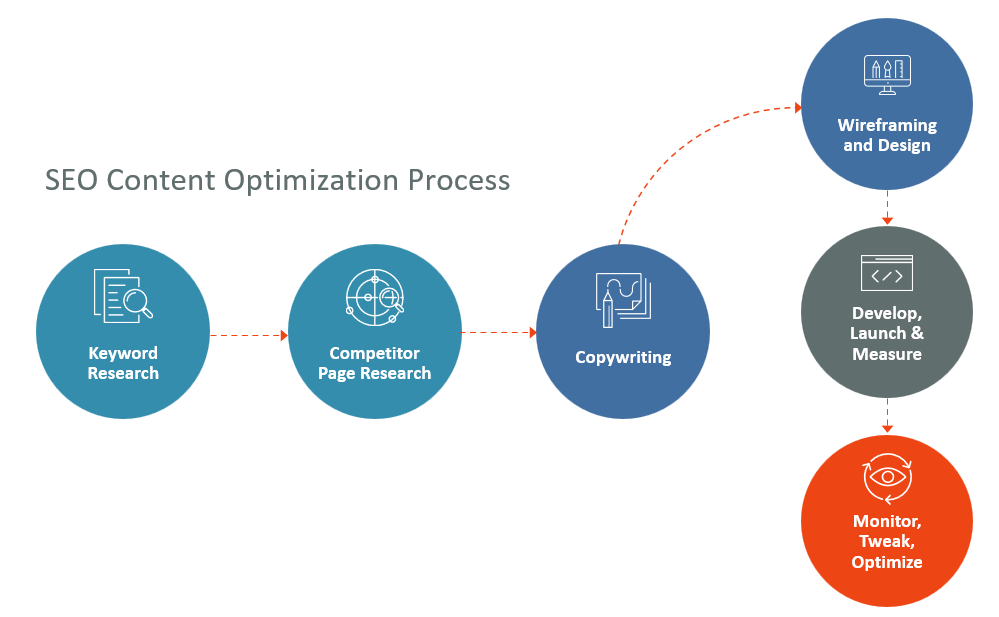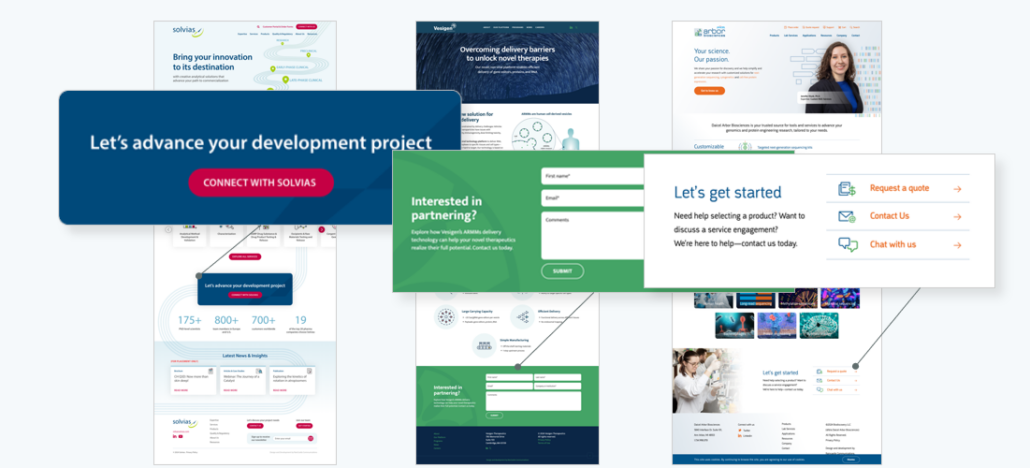In today’s digital-first world, your website is more than a business card — it’s your company’s face, storyteller, and lead generator. Especially in the life sciences sector, where competition is fierce and innovations happen rapidly, your website must translate complex science into compelling, audience-driven experiences.
Drawing from the expertise shared during a recent RainCastle Communications webinar, this guide walks you through a proven process for creating life sciences website content that connects, engages, and converts.
Why Your Website Matters More Than Ever
Life sciences is booming — with an estimated 11.5% global growth between 2022 and 2028, biotech, pharma, and medtech companies are operating in an increasingly noisy market.
At the same time, 90% of B2B buyers use web search at every stage of their journey — from discovery to decision and post-sale engagement. That means your website must:
-
Capture attention immediately
-
Clearly communicate your differentiated value
-
Speak to multiple audiences (customers, investors, partners, job seekers, and regulators)
In short: Your website isn’t just a destination; it’s a decisive business tool.
A 6-Step Process for Creating Effective Life Sciences Marketing Website Content
Creating standout content isn’t luck — it’s a structured process. Here’s how RainCastle approaches it:
1. Know Your Audiences
In life sciences, your audiences are diverse:
-
Prospective and existing customers — looking for solutions to specific problems
-
Partners — evaluating complementary technologies
-
Investors — seeking market opportunities and differentiation
-
Employees and recruits — assessing career opportunities and company culture
-
Regulators — verifying compliance and evidence-backed claims
Key takeaway:
Understand each audience’s needs and make it easy for them to find relevant content quickly.
2. Define What’s Important
Before drafting, RainCastle taps into subject matter experts (SMEs) within the organization — scientists, project managers, sales teams — to extract insights.
But not all information is equal.
-
Focus on “need-to-know” over “nice-to-know” details.
-
Save technical deep-dives (e.g., application notes, white papers) for a gated resources section.
-
Tell just enough of the story to intrigue and motivate action without overwhelming.
Pro tip:
Use gated resources to generate leads while still keeping core web pages concise.
3. Focus on Solutions
Website visitors are looking for answers to their problems, not just technical specs.
To align with their mindset:
-
Map solutions to problem statements gathered during research.
-
Frame your technology or service as the clear solution.
-
Highlight practical benefits — faster research, better outcomes, improved workflows.
Avoid:
Over-indexing on how your technology works without explaining why it matters to your audience.
4. Refine into Clear Messaging
Next comes turning insights into web-ready messaging:
-
Use clear, dynamic, engaging language.
-
Write for both technical and non-technical audiences.
-
Avoid jargon when possible (or carefully explain it).
-
Prioritize concise content — web visitors scan, they don’t read deeply.
-
Optimize content for mobile consumption — short paragraphs, strong headlines, bite-sized sections.
Messaging frameworks are a vital tool at this stage. A good messaging framework includes:
-
Topline value proposition
-
Brand or messaging pillars
-
“Reasons to believe” (proof points)
-
Internal positioning statements
5. Think Visually
In life sciences, visuals often tell the story better than words.
RainCastle’s recommendations:
- Use graphics, infographics, and flow charts to illustrate complex processes like Mechanisms of Action.
- Incorporate animated graphics where they enhance clarity (e.g., protein binding animations).
- Utilize interactive graphics for product filtering or location search to boost engagement.
- Ensure visuals are designed to match your brand look and feel, maintaining professionalism and consistency.
Examples:
- Interactive service filters based on clinical phase
- Pipelines showing clinical progress (static or clickable for deeper info)
- Zip code locators for patient recruitment or service locations
6. Optimize for SEO from the Start
SEO is not an afterthought.
Your content must be crafted with two audiences in mind:
-
Human visitors — writing that’s clear, relevant, and engaging
-
Search engines — content structured around meaningful keywords
RainCastle’s SEO process includes:
-
Keyword Research — Identify terms your audience actually searches (using tools like Google Ads Keyword Planner or SEMrush).
-
Competitor Page Research — Analyze top-ranking pages, not just known competitors.
-
Content Optimization — Integrate keywords naturally into headlines, subheads, and body content.
-
Meta Titles and Descriptions — Write them alongside web copy to ensure relevance and clickability.
-
Ongoing Monitoring — Measure page performance (scroll depth, time on page, conversions) and adjust accordingly.
Remember:
SEO success is a long game, not a set-it-and-forget-it task.
Bring It All Together: Best Practices for Life Sciences Websites
In addition to the 6 core steps, RainCastle emphasizes a few universal best practices:
Incorporate Clear Calls to Action (CTAs)
Throughout the site, CTAs should be:
-
Prominent — at the top, within scroll views, and bottom of every page
-
Actionable — e.g., “Connect with Us,” “Request a Demo,” “Download Whitepaper”
-
Tailored — Offer secondary CTAs for users not ready to contact sales (e.g., gated content downloads)
Call To Action Examples
Keep Content Fresh
Websites must evolve:
-
Post news, press releases, and events regularly.
-
Highlight new services or offerings.
-
Update visuals and case studies.
-
Maintain a blog or resource hub (at least monthly updates recommended).
Integrate with Broader Marketing Efforts
Tie your website into:
-
Email marketing campaigns
-
Social media posts
-
Paid digital campaigns
-
Sales enablement materials
Your website should act as the hub of your digital ecosystem.
